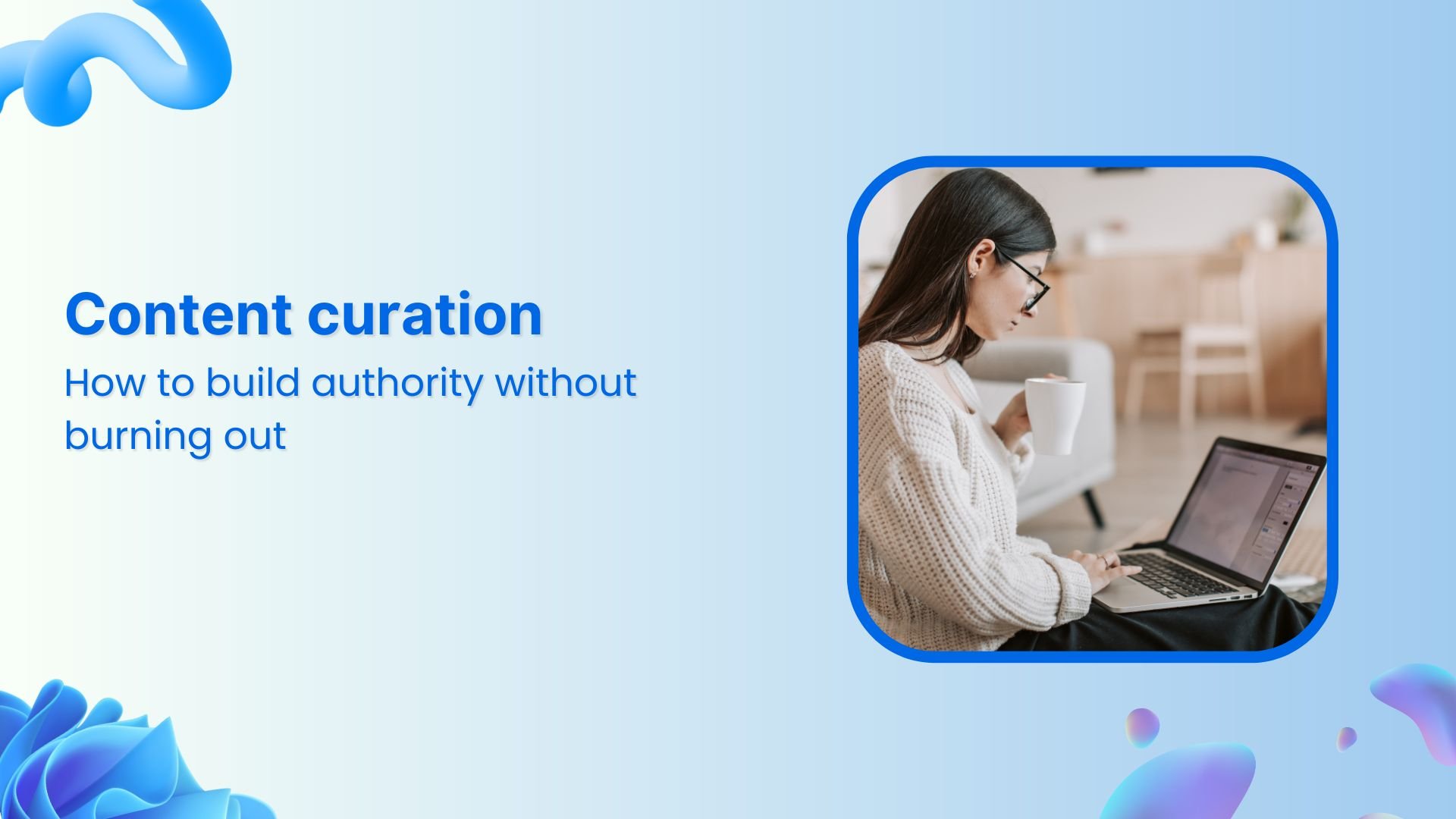AI video generation is now live - with all the premium models. Start creating
What is viral marketing: Strategies, examples & trends

In 2025, videos on social media generated 1200% more shares than text and image content combined. Viral content spreads rapidly, with engaging posts reaching millions within hours of publication.
Businesses value virality because one viral campaign can boost brand awareness exponentially, reaching global audiences without substantial costs. This guide is designed for marketers, entrepreneurs, and brands eager to leverage viral marketing effectively. You’ll discover what makes content go viral, why it’s critical for your marketing strategy, and how to create campaigns that resonate and spread.
The easiest way to manage and grow your social channels.
Try ContentStudio for FREE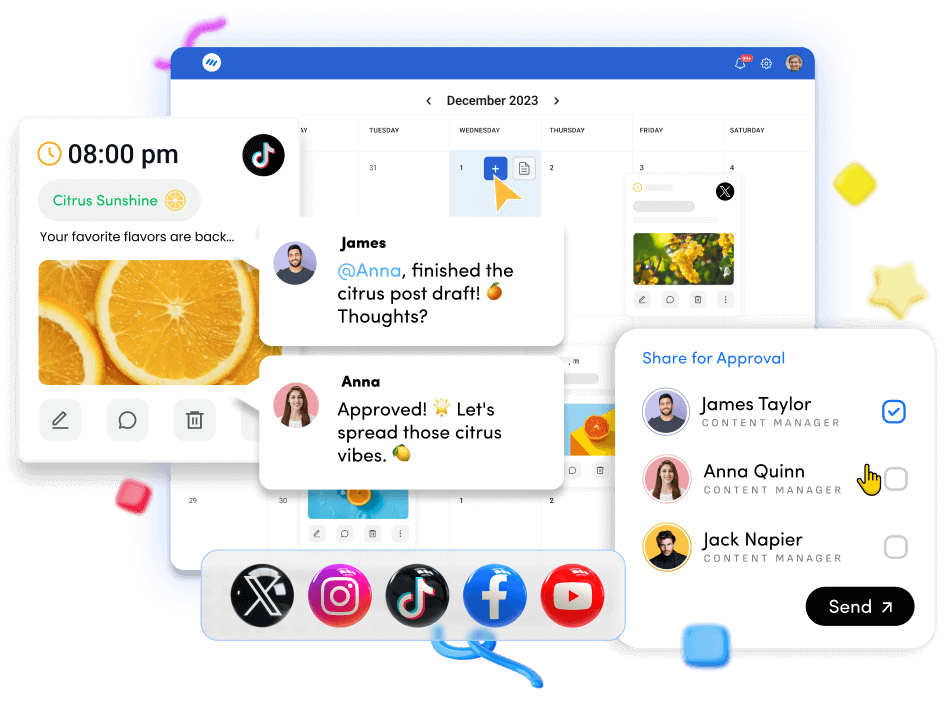
What is viral marketing?
Viral marketing encourages audiences to rapidly share content across their social networks, boosting social media reach. Unlike traditional methods relying on paid channels, viral strategies depend on organic peer-to-peer sharing. It first gained popularity in the late 1990s with simple email referrals and entertaining online content.
A well-known example is Hotmail embedding signup links into outbound emails, accelerating user growth. With the rise of social media in the mid-2000s, platforms like YouTube and Facebook drove viral trends. By 2025, short-form content, hashtags, and memes will dominate platforms like TikTok and Instagram Reels.
Traditional marketing offers brands message control, whereas viral campaigns pass control to the audience.

Read-up: Instagram Reels vs. TikTok: Which is better for content marketing?
People naturally trust recommendations from friends, giving viral campaigns authenticity and increased trustworthiness. Successful viral marketing combines three essential factors:
- An engaging message
- Influential messengers
- Platforms simplifying content sharing.
Strong messages spread rapidly if carried by the right individuals on suitable platforms, ensuring widespread campaign success.
How viral marketing works: The science behind the spread
Viral marketing harnesses the power of emotional connection, network dynamics, and psychological triggers to amplify content reach exponentially. Let’s explain how this phenomenon works and why specific campaigns spread like wildfire.

1. The chain reaction effect
Viral marketing relies on a chain reaction — one person shares a piece of content, then others follow, creating a ripple effect. As more people engage and share, the content spreads across new audiences, quickly expanding its visibility. This process is driven by network mathematics and psychology, where each sharer becomes a node potentially reaching dozens or even hundreds more.
2. Why people share: The psychology of virality
People share content for various reasons, often rooted in emotion, identity, and social connection. Common psychological motivations include:
- Self-expression: Sharing content that reflects personal values or identity.
- Relationship building: Strengthening bonds through shared experiences or information.
- Value addition: Passing along entertaining, informative, or emotionally impactful content.
Research confirms that content with humor, inspiration, or educational value tends to perform best regarding shares.
3. Social currency and the fear of missing out (FOMO)
Content that feels novel, surprising, or exclusive increases its “social currency” — making the sharer look informed or interesting. At the same time, FOMO plays a strong role: when content begins trending, people feel compelled to engage and share so they don’t feel left out of the conversation.
4. The viral coefficient: Measuring growth
A key metric in viral marketing is the viral coefficient — the average number of new users generated by a single user through sharing.
- A coefficient greater than 1 indicates exponential, self-sustaining growth.
- A coefficient less than 1 suggests that external promotion will be needed to maintain momentum.
This metric is crucial in assessing whether your campaign has the potential to “go viral” on its own.
5. The role of emotions in sharing
Emotions and sentiments are a powerful driver of viral content. Positive (joy, amusement, awe) or negative (anger, shock) emotions— significantly increase the likelihood of shared content.
- Positive emotions: Inspire and uplift, making people more likely to spread good vibes.
- Negative emotions: Stir strong reactions, prompting quick shares to spark conversation or outrage.
Campaigns that tap into authentic, emotionally resonant themes often see the highest levels of engagement and virality.
6. How Platforms Fuel Virality
Social media platforms supercharge viral marketing by:
- Using algorithms to boost high-performing content.
- Creating feedback loops through likes, shares, and comments.
- Encouraging engagement through trends, challenges, and discoverability features.
The more engagement content receives early on, the more likely platforms are to promote it widely — accelerating the viral loop.
Six proven viral marketing strategies for 2025
Not all viral success is accidental; smart strategy can significantly improve the chances of content going viral. Here are six proven viral marketing strategies for 2025, each supported by examples and best practices:
1. Content-based viral marketing strategies
Content-based strategies emphasize creating inherently shareable, impactful content. Video content dominates in 2025, with 89% of businesses using video marketing. Short, engaging, humorous, emotionally resonant videos consistently achieve higher virality.
Informative visuals like infographics or how-to guides naturally encourage sharing. Memes and visual storytelling resonate due to quick consumption. For example, surprising infographics or culturally relevant memes quickly gain traction. Optimizing content per platform (Instagram memes, TikTok vertical videos, and concise Twitter/X posts) maximizes impact.
Analyzing successful campaigns helps identify viral trends or emotional triggers. Pepsi’s TikTok campaign, shown here, uses a relatable vertical video to promote brand preference through humor, highlighting how the brand effectively tailors its content to TikTok’s native format.

2. Social media viral marketing techniques
Social media enhances viral marketing through tailored techniques. Using hashtags and viral challenges helps brands join or create trending conversations.
Social media success requires understanding platform-specific algorithms – including optimal posting times and response strategies – to maximize engagement. Promoting content across multiple platforms helps expand your reach. Creating content tailored to each platform’s culture (like concise threads on X/Twitter, emotional storytelling on Facebook, or trend-focused videos on TikTok) significantly improves effectiveness.
Starbucks launched the #RedCupContest, encouraging users to share holiday-themed cup art. This contest generated millions of views and thousands of entries across TikTok and Instagram.

3. Influencer-driven viral marketing
Influencer partnerships leverage credibility and follower bases, enhancing campaign reach. Influencer marketing reached a valuation of $24 billion in 2024. Collaborating with influencers whose personas align with brand values ensures authenticity. Micro-influencers, with highly engaged communities that offer superior engagement rates.
Skincare brands frequently partner with beauty influencers for product challenges, boosting community participation. Glossier, known for its user-generated content (UGC), often collaborates with influencers on Instagram. Instagram and TikTok are prime platforms for influencer-driven content. Strategic partnerships and authentic interactions make influencer marketing highly effective for viral campaigns.

4. Referral and word-of-mouth viral marketing
Referral and word-of-mouth strategies leverage personal trust, significantly enhancing virality. Over 80% trust personal referrals over advertising. Structured referral incentives boost customer participation. Dropbox’s referral program, offering extra storage for inviting friends, achieved 3900% growth in 15 months. Effective referral strategies combine appealing incentives (discounts, rewards) and easy sharing. Remarkable product experiences stimulate organic word-of-mouth.
For example, Dropbox referral program offers free storage for users who invite friends to sign up.

5. Gamification and contests
Gamification incorporates competitive elements like scoring, leaderboards, and rewards, significantly enhancing campaign engagement. Contests encourage sharing by rewarding participants for actions like referrals or content creation.
Product launch waitlists often use gamified leaderboards or referral perks to incentivize sign-ups, driving rapid viral growth. Social media contests (“share and tag friends”) directly amplify campaign visibility.
For instance, tagging friends for giveaways dramatically increases audience reach and interaction. Awarding badges or recognition (“Top Fan”) also incentivizes competitive sharing.
BCXmall demonstrated this by launching a Sephora giveaway on Instagram, asking followers to tag friends and follow the page to enter.

6. Trend-driven and reactive content
Trend-driven marketing capitalizes on current events or viral trends, quickly boosting visibility. Netflix effectively leveraged the viral “Wednesday dance” on TikTok, making “Wednesday” the most-watched English-language Netflix series, with 176 million households viewing it within a month. Successful reactive content requires relevance, rapid turnaround, and contextual awareness. Brands must connect trends authentically to their identity and respond quickly.

Timely & relevant social media responses can create viral marketing moments. For example, Oreo’s “Dunk in the dark” tweet captured attention during a Super Bowl power outage. Similarly, Chipotle quickly capitalized on the popular “Corn Kid” meme, resulting in exceptional engagement with over 2 million likes and 11,000 comments on their post.
Viral marketing platforms: Where content goes viral
Choosing the right platform significantly impacts viral marketing success. Each platform uniquely suits different content formats and audiences. Below is an overview of primary platforms for viral marketing:
Social media platforms for viral marketing
- Facebook: Broad user base, suitable for articles, images, and diverse videos. Effective for heartwarming stories and viral news.
- Twitter (X): Ideal for real-time engagement, witty content, and quick viral spread via retweets. Best suited for news, memes, or brand banter.
- Instagram: Visually driven, perfect for meme culture, branded challenges, and quick, engaging Reels boosted by the Explore algorithm.
- LinkedIn: Professional network, excellent for viral content like compelling work stories, career insights, and thought leadership posts.
Video platforms for viral content
Video platforms amplify virality through immersive and shareable content:
- YouTube: Leader in long-form videos, hosting 27% of viral marketing videos (Shopify.com). Known for entertaining, complete stories or memorable ads.
- TikTok: Core platform for short, instantly engaging videos; birthplace of numerous recent viral hits, facilitating easy cross-platform sharing.
- Instagram Reels/Facebook Watch: Promote short-to-medium-length videos, aligning with trends or popular audio.
- Twitch: Livestream platform producing viral moments, primarily in gaming or live event contexts, generating widely shared highlights.
- WhatsApp/Telegram: Effective distribution channels through private group sharing, enabling silent yet extensive viral spread.
Emerging platforms for viral marketing
Emerging or niche platforms offer unique opportunities for viral breakthroughs:
- Clubhouse/Discord: Audio and community-based platforms that generate viral discussions, later shared widely on mainstream channels.
- Reddit: Known for identifying trends early; front-page content often receives massive attention and media pickup.
- Triller/Byte: Newer Gen Z-focused apps foster unique, engaging content, providing brands with first-mover advantages.
- Gaming Platforms/Metaverse (Fortnite, Roblox): Hosting virtual events and branded experiences, attracting millions and generating external buzz.
- Messaging Apps (Telegram/WhatsApp) are key communication channels for regional viral content sharing, particularly videos and memes.
Marketers should remain adaptive, respecting each platform’s norms and leveraging the unique strengths of these emerging networks.
5 Successful viral marketing campaign examples
Nothing illustrates viral marketing better than real-world campaign successes. Below, we explore five noteworthy viral marketing campaigns, highlighting what they achieved and why they worked. These examples span B2C hits, B2B surprises, and budget-friendly wins, demonstrating that any brand with the right approach can go viral.
1. Ocean Spray – Skateboarding TikTok
Ocean Spray capitalized on an organic viral moment when a TikTok video of a man skateboarding while drinking Ocean Spray cranberry juice gained widespread attention. Set to Fleetwood Mac’s song “Dreams,” the video quickly went viral.
Ocean Spray responded proactively by gifting the creator a new truck loaded with products, generating further positive media coverage and brand goodwill. This spontaneous campaign highlighted how timely recognition of organic content can significantly amplify brand visibility and public perception.
2. Duolingo – TikTok Mascot
Duolingo boosted its popularity by creating humorous, quirky content featuring its mascot, Duo the Owl, on TikTok. These playful videos quickly gained millions of views, significantly increasing user engagement and brand awareness.
By creatively leveraging humor and relatable scenarios, Duolingo effectively tapped into the younger demographic, making language learning entertaining and approachable. This campaign demonstrates how effectively utilizing a platform’s culture can turn a brand mascot into a viral sensation.
3. Upwork – “This is how we work now”
Upwork demonstrated B2B viral potential through a humorous campaign featuring a zombie boss resisting modern work practices. This quirky Halloween-themed video resonated widely, generating over 13.4 million views on TikTok.
Upwork strategically amplified its reach by collaborating with LinkedIn influencers who shared and discussed the video, extending the campaign’s audience within professional circles.
This campaign illustrates that creative, relatable content addressing broader cultural conversations—like remote work—can effectively drive virality within B2B markets.
4. Coinbase – QR Code Super Bowl Ad
Coinbase utilized minimalism effectively during its 2022 Super Bowl ad by displaying a floating QR code ad. The unique and mysterious approach generated immediate curiosity, crashing Coinbase’s website due to high traffic.
The campaign generated extensive media coverage and online discussion, significantly increasing brand visibility and user sign-ups. Coinbase’s campaign highlights that simplicity, curiosity, and strategic timing can create powerful viral impacts, even for complex products like cryptocurrencies.
5. Adobe – “I am your acrobat”
Adobe achieved B2B virality with its humorous video series featuring comedian Hasan Minhaj promoting Adobe Acrobat features. The engaging, witty content appealed widely beyond typical software promotion, achieving substantial shares and views outside conventional B2B channels.
Adobe’s strategic use of recognizable talent and relatable humor resulted in broader brand awareness and audience engagement. This campaign demonstrates that B2B companies can effectively use humor and personality-driven content to reach and resonate with professional and general audiences, significantly enhancing viral reach.
How to create a viral marketing campaign: Step-by-step guide
Creating a viral marketing campaign involves careful planning and a bit of daring creativity. While virality can never be guaranteed, following a structured approach will maximize your chances. Here is a step-by-step guide:
1. Setting viral marketing goals
Clearly defining campaign goals is critical for success in viral marketing. Social media goals should align with business objectives, such as increasing brand awareness, driving web traffic, boosting product sales, or gathering user-generated content.
Identify specific, measurable targets like “achieving 1 million video views within one month” or “boosting sign-ups by 20% through campaign referrals.” Clear goals shape the campaign’s strategy and content, ensuring efforts contribute real business value.
Goals help determine the type of content produced—broad appeal for awareness or focused messaging for conversions. Additionally, set benchmarks for metrics such as shares, reach, engagement, and conversion rates to assess effectiveness later. Clear, realistic goals prevent the aimless pursuit of virality and maximize meaningful results.
2. Identifying your target audience
Accurately identifying the target audience significantly enhances the campaign’s chance of virality. Define demographics such as age, gender, location, and psychographics, including interests and behaviors.
Research the platforms favored by the target audience. Teenagers typically frequent TikTok, young professionals prefer LinkedIn, and specific communities gather on niche forums like Reddit. Analyzing content previously popular among the target group offers valuable insights for crafting your campaign.
Social media monitoring tools are beneficial in identifying relevant trends, preferred content formats, and influential subgroups or individuals within the audience. Tailor the content’s tone, references, and emotional triggers to resonate deeply with the audience. Content addressing their unique experiences, humor, or challenges increases the likelihood of being shared.
3. Creating shareable content for viral marketing
Creating compelling, shareable content is central to achieving virality. Content should powerfully evoke emotions such as humor, surprise, or inspiration, motivating viewers to share.
Crafting an engaging hook—whether a captivating video opening, intriguing headline, or striking visual—immediately captures attention. Concise and clear messages are crucial; viral videos typically last 1–2 minutes or less than 30 seconds on platforms like TikTok. Ensure the content delivers value through humor, insights, or valuable information. Relatable, everyday scenarios significantly increase shareability as viewers recognize personal connections.
Encouraging user-generated content, like hashtag challenges, invites audience participation and creates shareable interactions. Integrating platform-specific elements, like trending songs or formats, enhances content discoverability.
Maintain reasonable technical quality, ensuring clear audio and visuals to avoid frustrating viewers. Finally, verify that your content is easy to share via integrated social sharing buttons, simple links, or clear calls to action.
4. Seeding your viral marketing campaign
Effective seeding strategically places content among initial audiences to encourage wider distribution. Begin by sharing content across your own social media, websites, and email subscriber lists. Expand reach by engaging relevant online communities like Facebook groups, Reddit forums, or specialized networks.
Approaching influencers or thought leaders directly can facilitate further distribution, especially if the content aligns with their interests or enhances their reputation. Offering exclusive previews to key individuals or media outlets can generate early buzz.
Paid social media promotion targeting your demographic can increase initial visibility and stimulate platform algorithms to amplify the content. Timing content release during periods of peak audience activity maximizes early engagement. Thoughtful seeding creates conditions necessary for organic growth, optimizing chances for sustained virality.
5. Measuring viral campaign success
Effectively measuring your viral campaign’s success helps determine if objectives were met and informs future strategies. Establish clear metrics aligned with your initial goals. Utilize analytics tools provided by social media platforms (e.g., Facebook insights, Instagram analytics, TikTok analytics) to gather detailed data on user interactions. Track referral traffic through services like Google Analytics, identifying how users arrive from viral sources.
Comparing pre- and post-campaign data allows for the assessment of direct impact, helping demonstrate tangible business outcomes. Regular monitoring during the campaign enables real-time adjustments, optimizing performance as needed.
Viral marketing tools and resources
Implementing a successful viral marketing campaign requires the right tools to create, distribute, and analyze content effectively. Below is an overview of essential tools categorized by their primary functions.
Content creation tools
Crafting engaging content is foundational for any viral campaign. The following tools assist in producing compelling materials:
- ContentStudio: An AI-powered platform offering advanced content generation capabilities, including AI-driven captions, compelling tweets, and optimized images. It simplifies the creation process with templates and real-time suggestions, ensuring content resonates with target audiences and boosts engagement.
- Canva: A user-friendly design tool enabling the creation of professional graphics, videos, infographics, and presentations without extensive design expertise. It offers numerous templates and collaborative features, making content creation straightforward and accessible.
- Adobe Creative Cloud: A comprehensive suite of professional-grade applications, such as Photoshop for image editing, Premiere Pro for video production, and Illustrator for vector graphics. Ideal for creating high-quality, customized multimedia content suited for viral potential.
Social media management tools
Efficiently managing and scheduling social media posts ensures consistent engagement. The following tools simplify these processes:
- ContentStudio is a robust social media management platform that allows users to schedule, publish, and manage content seamlessly across multiple platforms. Its unified dashboard streamlines workflow, enhances collaboration, and ensures consistent messaging.
- Hootsuite: Facilitates the scheduling, publishing, and monitoring of posts across various social media platforms from one centralized interface. It also provides analytics and reporting to gauge the effectiveness of campaigns.
- Buffer: Simplifies scheduling and publishing tasks while providing insights into post-performance, helping optimize engagement by determining the best posting times and content types for each audience segment.
Social Media Content Calendar
Stay consistent and organized with Contentstudio’s social media content calendar for marketers and agencies.
Get Started for FREE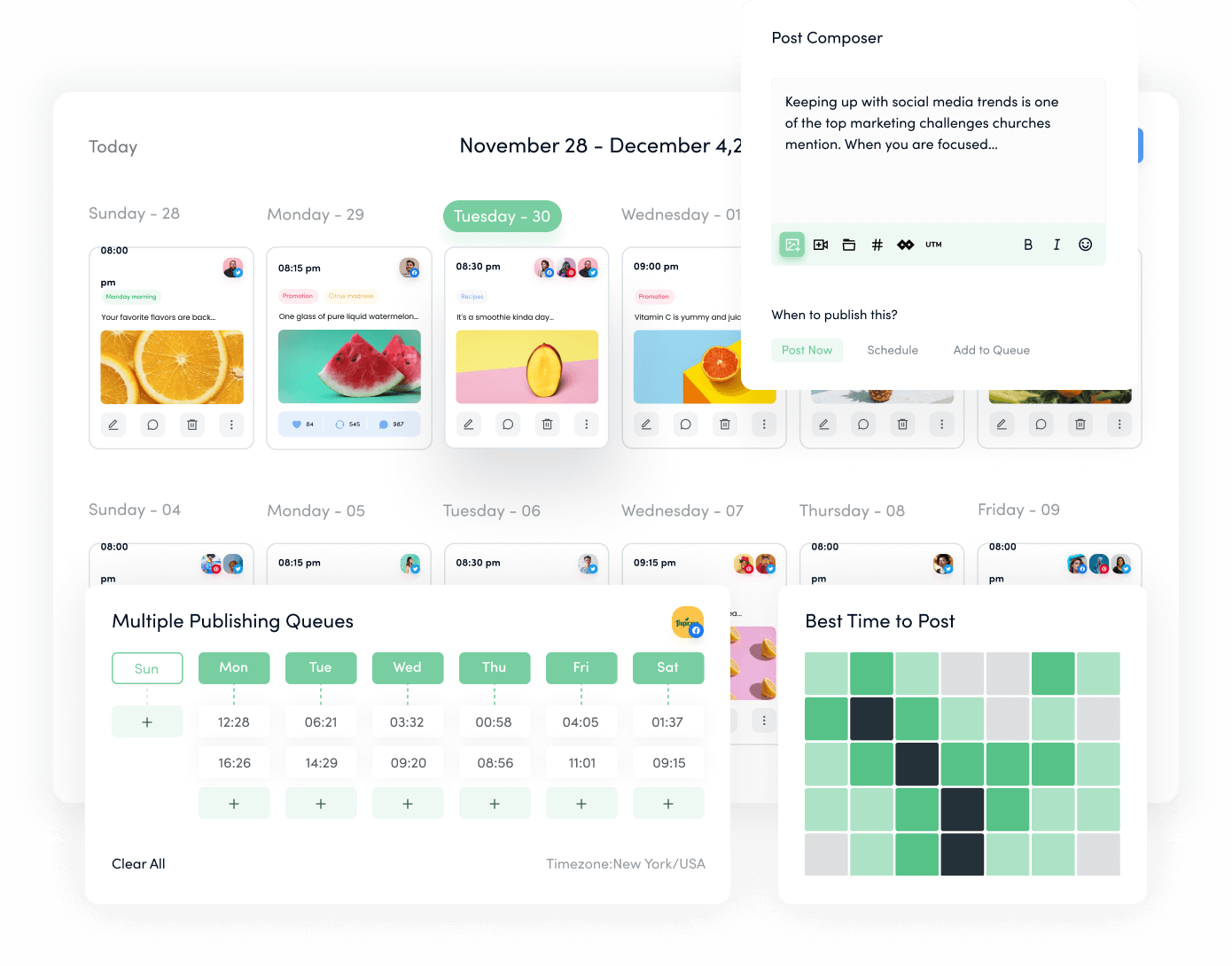
Analytics and monitoring tools
Measuring your content’s impact is crucial for assessing success and guiding future strategies. These tools offer detailed analytics:
- ContentStudio: Provides comprehensive analytics and reporting on content performance, including engagement metrics, sentiment analysis, and audience growth patterns. Insights generated help identify top-performing content and optimal posting strategies.
- Google Analytics: Tracks detailed website traffic, visitor behavior, and conversion rates. Essential for understanding how viral content drives user engagement, traffic sources, and conversions, informing future campaign strategies.
Social Media Analytics
Fine-tune your social media strategy for success with in-depth analytics and white-labeled reports.
Get Started for FREE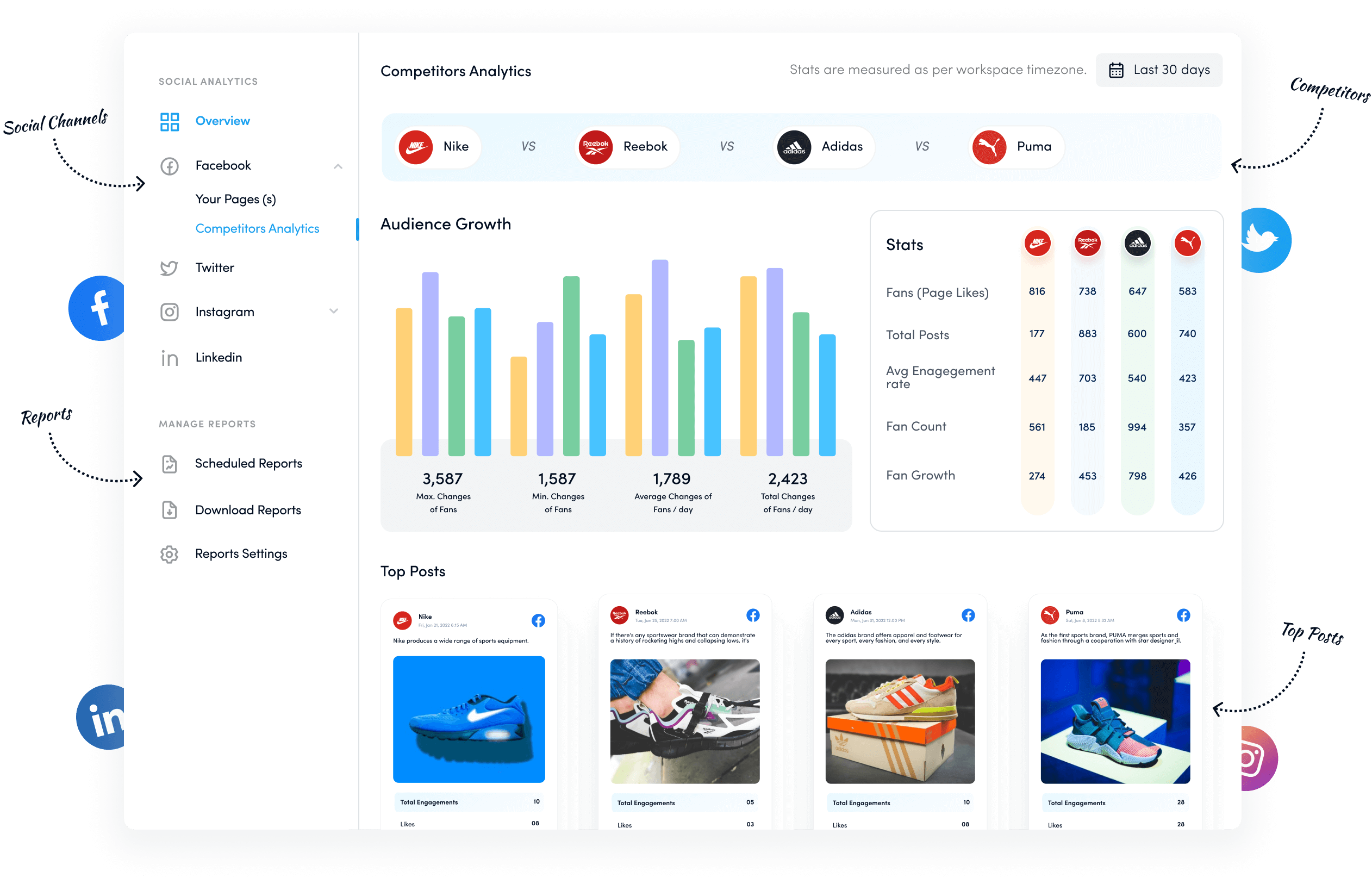
Utilizing these tools can significantly enhance the effectiveness of your viral marketing campaigns by streamlining content creation, distribution, analysis, and discovery processes.
Measuring viral marketing success: KPIs and metrics
Effectively measuring viral campaign success requires focusing on key performance indicators (KPIs) and metrics aligned with business objectives. Here are critical metrics categorized clearly, with explanations of calculation methods, practical uses, and detailed insights.
Viral coefficient and growth rate
The viral coefficient (K-factor) quantifies how effectively a campaign spreads organically.
Viral coefficient (K-factor)
- Calculation: Multiply the number of invitations sent per user by the conversion rate of those invitations. Formula: K = (Invites Sent per User) × (Conversion Rate).
- Use & insights: A K-factor above 1 indicates exponential growth, suggesting each user generates more than one additional user, creating self-sustaining growth. Regular monitoring helps identify if campaigns reach this critical threshold, informing strategic adjustments and scaling opportunities. Conversely, a K-factor below 1 signals that the campaign will eventually decline, prompting corrective measures.
Growth rate
- Calculation: Percentage increase in active users or content views measured over defined intervals (daily, weekly).
- Use & insights: Indicates how rapidly content reaches wider audiences. Rapid initial growth often signifies strong engagement and suggests a high potential for long-term virality. Tracking this metric enables marketers to predict and manage campaign lifecycle stages effectively.
Engagement Metrics
Engagement metrics measure the depth and quality of audience interactions, indicating content resonance and effectiveness.
Shares
- Calculation: Total number of shares or forwards across platforms.
- Use & insights: High share counts reflect content that resonates deeply, enhancing organic reach. Sharing amplifies visibility beyond initial audiences, indicating content’s appeal and audience advocacy. It directly contributes to sustained virality and broader campaign impact.
Likes/Favourites
- Calculation: Total number of likes or favorites received.
- Use & insights: Reflect positive audience sentiment and general content appeal. While less influential in spreading content than shares, a high number signals strong initial approval, aiding in algorithm-driven visibility boosts.
Comments/Replies
- Calculation: Total count of audience comments and replies.
- Use & Insights: High volumes indicate active audience involvement, signaling significant emotional or intellectual engagement. Analyzing comment content helps marketers understand audience perspectives, refine messaging, and foster ongoing community interaction.
Watch time (Video)
- Calculation: Average duration viewers watch video content.
- Use & insights: Longer watch times suggest strong viewer interest and effective content delivery. This metric guides content optimization strategies and influences platform algorithms to enhance visibility due to high viewer retention.
Click-through rate (CTR)
- Calculation: Percentage of viewers clicking on embedded links or calls to action
- Use & insights: Indicates audience willingness to engage further, moving beyond passive viewing toward active brand interaction. Higher CTRs signify effective calls-to-action and content relevance, crucial for achieving tangible business objectives.
Engagement rate
- Calculation: Total engagements (likes, shares, comments) divided by total impressions.
- Use & insights: Provides a normalized measure of content effectiveness, allowing for comparative analysis across different campaigns. A higher engagement rate reveals deeper resonance with audiences, informing future content strategies.
Conversion metrics
Conversion metrics evaluate how effectively viral campaigns achieve defined business goals and measurable outcomes.
Conversion rate
- Calculation: Percentage of viewers completing a desired action (purchases, sign-ups, downloads).
- Use & insights: Directly indicates campaign effectiveness in meeting business objectives. Tracking conversion rates helps marketers pinpoint strengths and weaknesses within the customer journey, guiding improvements for future campaigns.
Revenue and sales
- Calculation: Total sales or revenue directly attributed to campaign activities.
- Use & Insights: Measures direct financial return on campaign efforts. Understanding revenue impact helps validate marketing investments and informs strategic budget allocations for future marketing initiatives.
Lead generation
- Calculation: Number of new leads (emails or registrations) generated by campaign activities.
- Use & Insights: Reflects the campaign’s ability to attract and capture potential customers. High lead counts provide valuable opportunities for future nurturing and conversion, contributing to sustained business growth.
ROI of viral marketing
Return on Investment (ROI) compares campaign-generated gains against incurred costs, quantifying overall marketing effectiveness.
ROI calculation
- Calculation: (Total Gains – Total Costs) / Total Costs × 100%
- Use & Insights: Demonstrates campaign financial success by comparing tangible gains (direct revenue, leads generated) and intangible benefits (media exposure value, brand equity improvements) against expenditures. A positive ROI indicates effective resource utilization, supporting strategic decision-making and justifying future marketing investments.
Advantages and disadvantages of viral marketing
Viral marketing offers significant opportunities but also carries distinct challenges. It can quickly elevate brand visibility and achieve impressive results with minimal resources when executed effectively. However, marketers must carefully navigate potential risks and unpredictabilities to avoid unintended consequences.
Advantages of viral marketing
Low cost, high reach: Content spreads through audience shares without paying per impression, exposing brands to millions of potential customers.
Enhanced brand awareness: Quickly boosts recognition as content spreads, fostering recall and potentially increasing sales and media attention.
Social proof: Peer-shared content appears more authentic and trustworthy than traditional ads, strengthening brand reputation.
Community engagement: Encourages audience interaction, turning passive viewers into active participants and fostering loyalty.
Multiplier effect: Attracts media coverage, increases searches, and grows social followings, amplifying campaign outcomes.
Disadvantages of viral marketing
Unpredictability: Success depends on timing, cultural factors, and audience mood despite careful planning.
Loss of control: Once public, audience interpretation can’t be controlled, risking misunderstandings or negative reactions.
Short-lived impact: Popularity often declines rapidly without strategies to convert attention into lasting engagement.
Scalability challenges: Sudden popularity can strain operations, overwhelming supply chains and customer support systems.
Targeting issues: Often reaches broad, unintended audiences beyond primary market segments, inflating metrics without meaningful conversions.
Measurement difficulties: Attributing business outcomes directly to viral campaigns is challenging within complex marketing ecosystems.
Reputation risks: Campaigns perceived as artificial risk audience backlash, potentially damaging brand sentiment.
Final thoughts
Viral marketing leverages audience sharing to amplify reach, engagement, and brand visibility economically. Effective strategies involve compelling content, influencer partnerships, social media trends, gamification, and audience participation. Platforms like TikTok, Instagram, LinkedIn, and YouTube each offer distinct opportunities for virality.
Viral campaigns provide exceptional results but carry unpredictability, reduced message control, and reputation risks. Consider your goals, audience targeting, risk tolerance, and scalability before adopting viral tactics. Incorporate viral marketing strategically in a broader marketing mix, balancing potential rewards against risks to achieve meaningful, sustainable impact.
Simplified social media marketing for individuals & agencies.
Try ContentStudio for FREE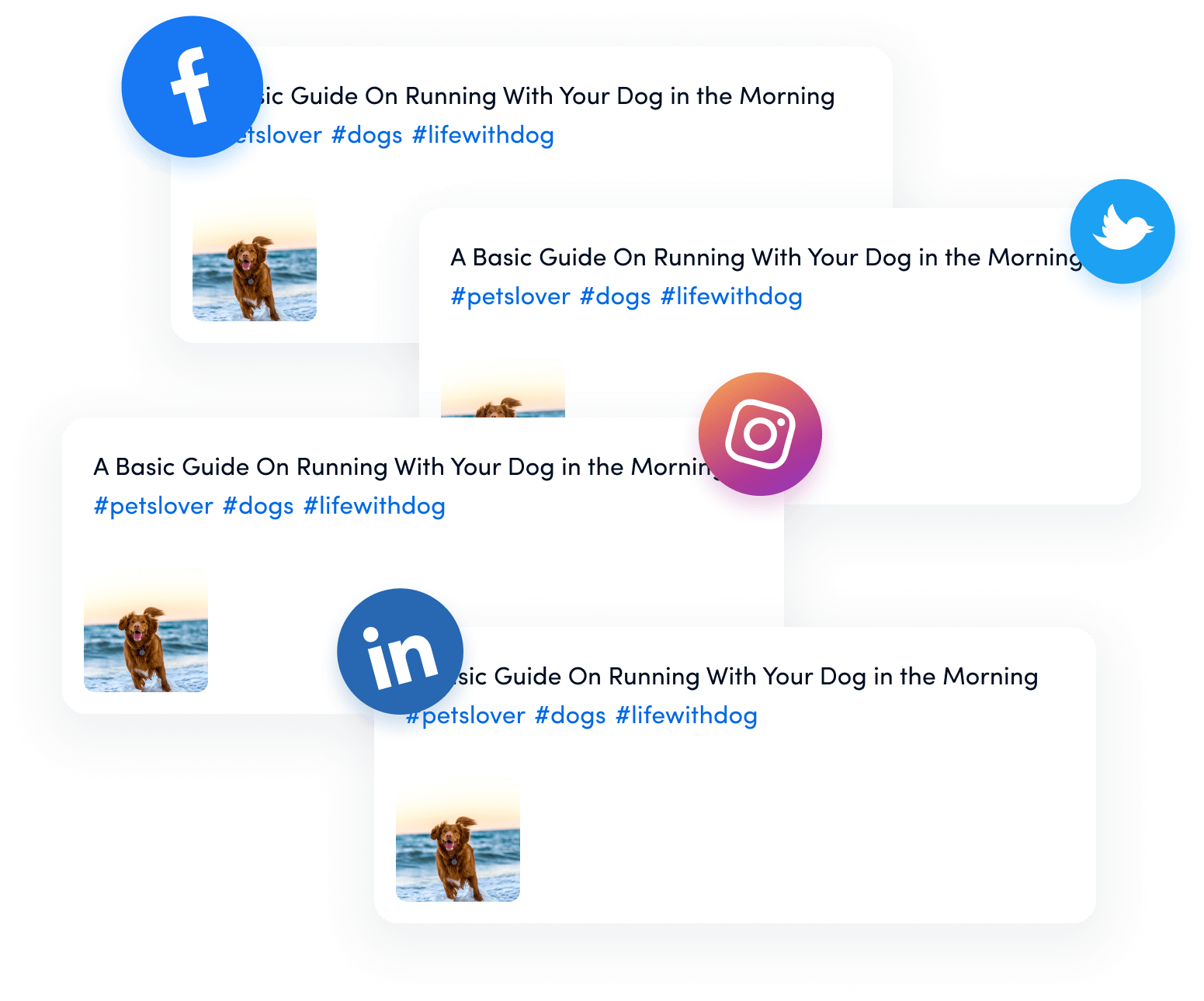
Frequently asked questions
What does it mean for content to “go viral”?
Content “goes viral” when it spreads rapidly through widespread sharing, greatly surpassing its original intended audience, reaching large numbers quickly, driven by user sharing rather than paid advertising.
Can small businesses use viral marketing successfully?
Yes, small businesses can successfully leverage viral marketing through creative, authentic campaigns. Like neighborhood challenges or unique product videos resonate strongly, providing cost-effective exposure and significant brand visibility.
How can I increase the chances of my content going viral?
Improve virality odds by creating short, emotionally engaging, relatable content, aligning with trends, using clear share prompts, optimizing posting times, engaging influencers early, and distributing strategically across active platforms.
Recommended for you
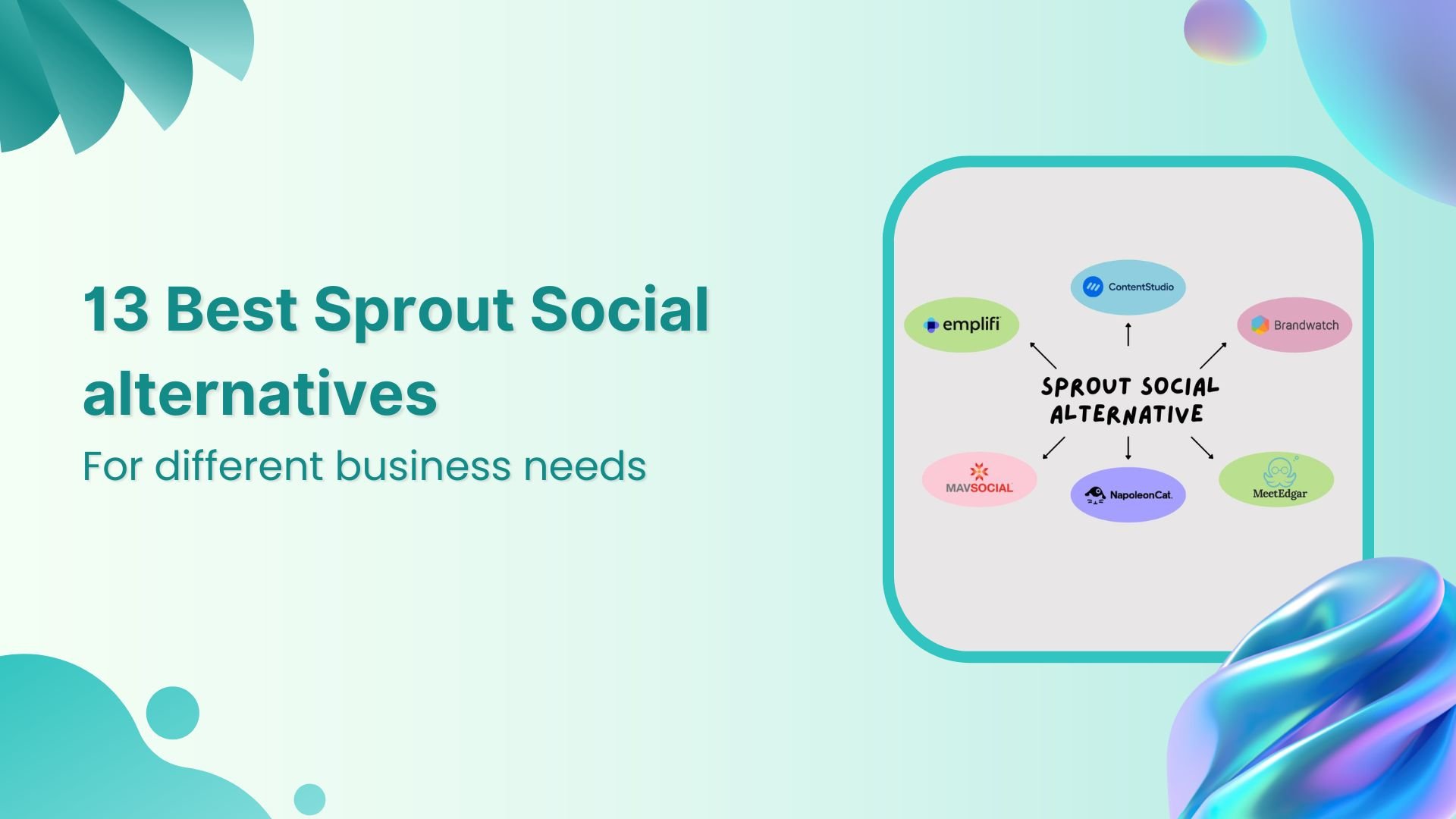
13 Best Sprout Social alternatives for effective social media management
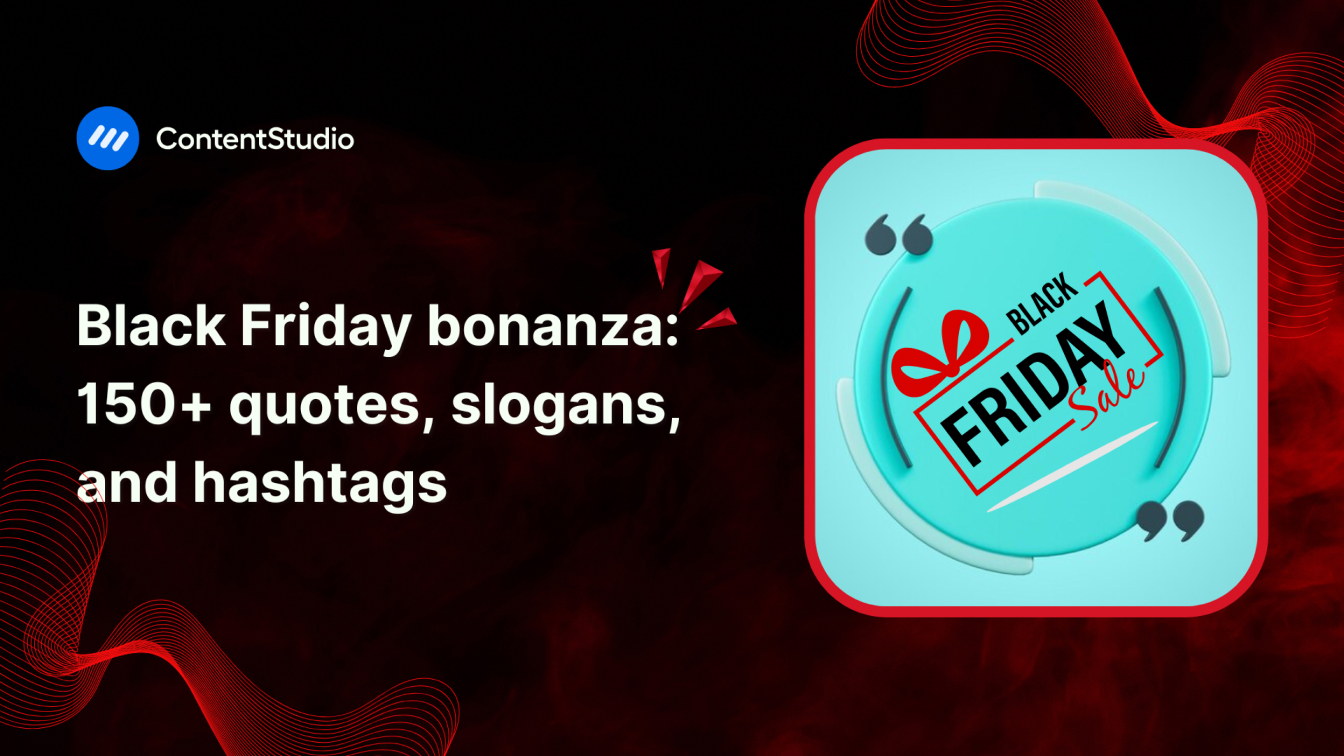
150+ Black Friday quotes, hashtags, and slogans to boost sales

Why is an integrated marketing campaign beneficial for your brand?


Powerful social media management software
14-day free trial - No credit card required.
